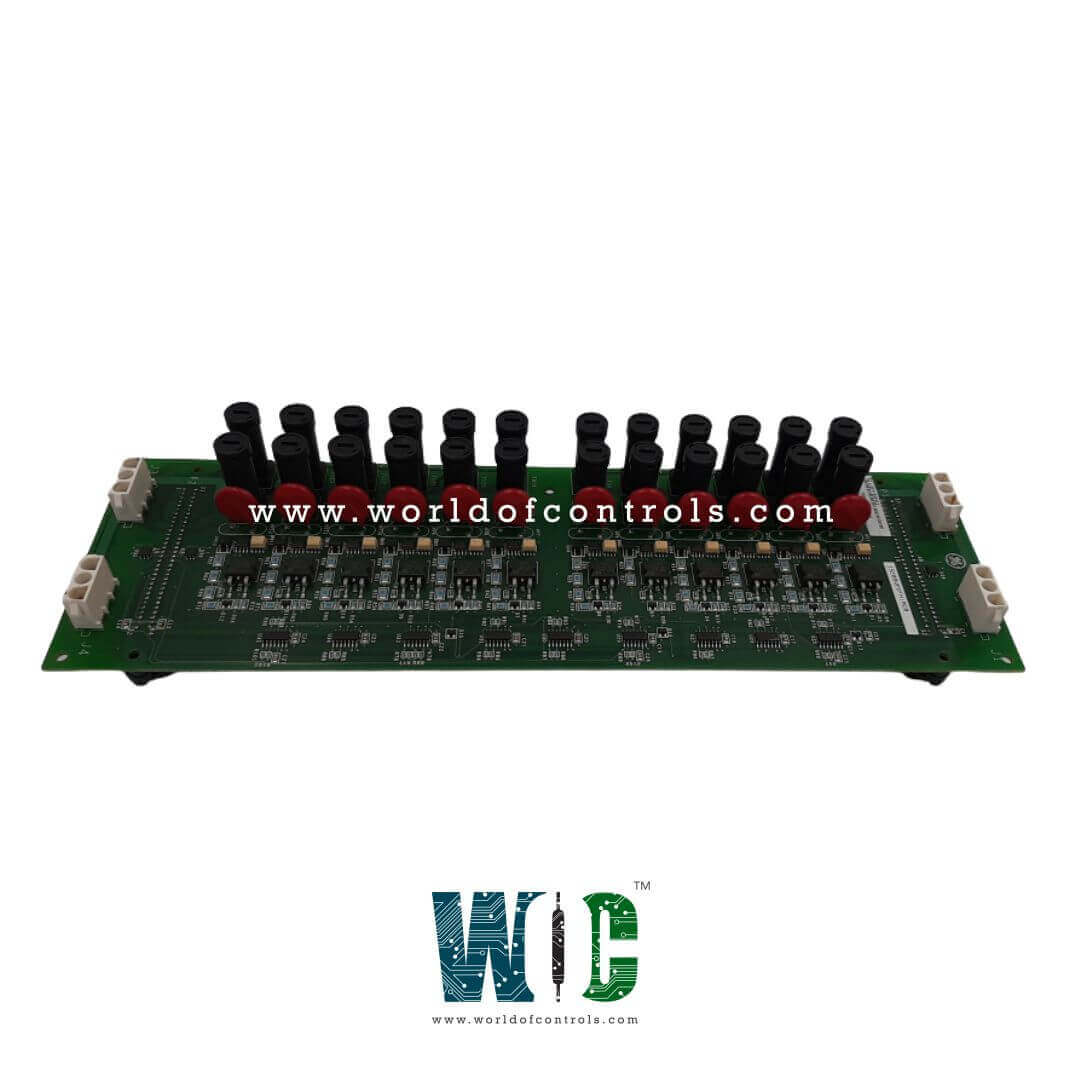
World Of Controls understands the criticality of your requirement and works towards reducing the lead time as much as possible.
IS200WPDFH1ACD - Optional Power Distribution Board is available in stock which ships the same day.
IS200WPDFH1ACD - Optional Power Distribution Board comes in UNUSED as well as REBUILT condition.
To avail our best deals for IS200WPDFH1ACD - Optional Power Distribution Board, contact us and we will get back to you within 24 hours.
SPECIFICATIONS:
Part Number: IS200WPDFH1ACD
Manufacturer: General Electric
Series: Mark VI
Product Type: Optional Power Distribution Board
Number of channels: 12
Number of output relay channels: 12
Input span: 4-20 mA
Technology: Surface Mount
Size: 10.16 cm wide x 3.02 cm high
Common Mode Voltage Range: ±5 V
Number of Fused Branches: 12
Fuse rating: 3.15 A at 25°C
Maximum Lead Resistance: 15Ω
Analog output current: 0-20 mA
Voltage monitor: 16 V DC
Operating temperature: -30 to 65 °C
Repair: 3-7 days
Availability: In Stock
Country of Origin: United States
Manual: GEH-6421H
FUNCTIONAL DESCRIPTION:
IS200WPDFH1ACD is an Optional Power Distribution Board manufactured and designed by General Electric as part of the Mark VI Series used in GE Speedtronic Gas Turbine Control Systems. WPDFH1A is a daughterboard to TRLYH#F to supply power to the customer’s solenoids. WPDF holds two power distribution circuits, which can be independently used for standard 125 V DC, 115 V AC, or 24 V DC sources. Each section consists of 6 fused branches that provide power to the TRLYH#F terminal board. Each branch has its voltage monitor across its fuse pair secondary. Each of these voltage detectors is fanned out to three independent open-collector drivers for feedback to each of the I/O processors R, S, T. The WPDF should not be used without TRLYH#F. Fused power flows through this board down to the TRLY terminal board points. Fuse power feedback is controlled by the TRLY.
INSTALLATION:
Connect the wires for the 12 solenoids directly to two I/O terminal blocks on the terminal board as displayed in the following figure, TRLY_1F Terminal Board Wiring. Each block is held down with two screws and has 24 terminals accepting up to #12 AWG wires. A shield termination strip attached to the chassis ground is located immediately to the left side of each terminal block. Solenoid power for outputs 1-12 is available if the WPDF daughterboard is used. Alternatively, customer power may be wired to the terminal block. The 28 V dc power for the terminal board relay coils and logic comes from the three I/O boards connected at JR1, JS1, and JT1.
OPERATION:
The same relays are used for the AC and DC voltage levels given in the Specification section. Also, the same relays are used on the H1F and H2F boards, but the circuit is different. Relay drivers are mounted on the relay terminal board and drive the relays at the frame rate. The relay outputs have failsafe features so that when a cable is unplugged or communication with the associated I/O board or I/O pack is lost, the inputs vote to de-energize the corresponding relays. This board only supports TMR applications. The relay control signals are routed into TRLY from the three I/O processors R, S, and T through plugs JR1, JS1, and JT1. These signals directly control the corresponding relay driver for each TMR section R, S, and T. Power for each section’s relay coils comes in from its own I/O processor and is not shared with the other sections.
POWER DISTRIBUTION BOARD:
The optional WPDF power distribution board mounts on top of TRLY, making connections at J1 and J2. The board is held in place with one screw located at the center of the WPDF board. Power for the two sections of the board is wired in through three-pin connectors J1 and J4, and this can be daisy-chained out through adjacent plugs J2 and J3. Power for the customer’s solenoids is wired as shown in the following figure. If the WPDF board is not used, the customer must supply power to the solenoids.
WOC has the largest stock of OEM replacement parts for GE Speedtronic Gas Turbine Control Systems. We can also repair your faulty boards and supply unused and rebuilt boards backed up with a warranty. Our team of experts is available around the clock to support your OEM needs. Our team of experts at WOC is happy to assist you with any of your automation requirements. For pricing and availability on parts and repairs, kindly contact our team by phone or email.
How many output channels does the WPDF board support?
The board supports a total of 12 output relay channels, divided into two independent power circuits with six fused branches each. These branches supply power through the TRLYH#F terminal board to connected solenoids.
What input voltages can be used with this board?
Each of the two power circuits on the WPDF can independently support 125 V DC, 115 V AC, or 24 V DC sources. This flexibility makes the board suitable for various power supply configurations typically found in industrial turbine systems.
How is the board mounted and connected to the system?
The board mounts on top of the TRLY terminal board and connects via connectors J1 and J2. Additional power input is received through J1 and J4, and power can be daisy-chained out through J2 and J3. A central screw secures the board in place.